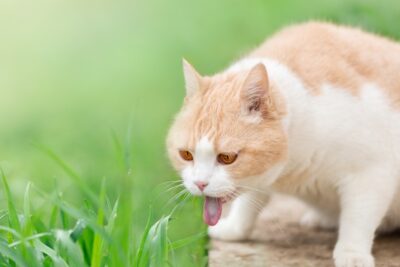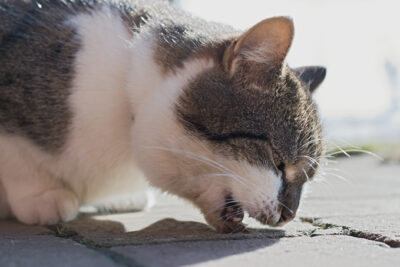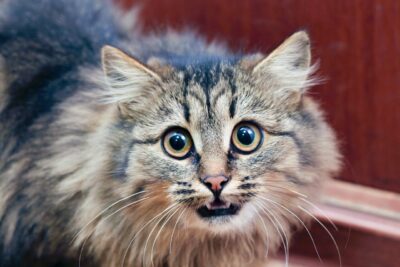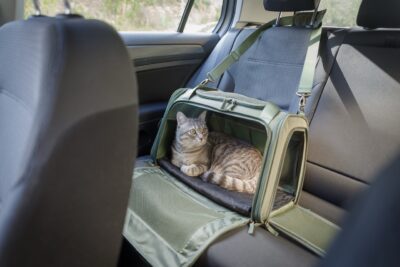Hepatic Lipidosis in Cats
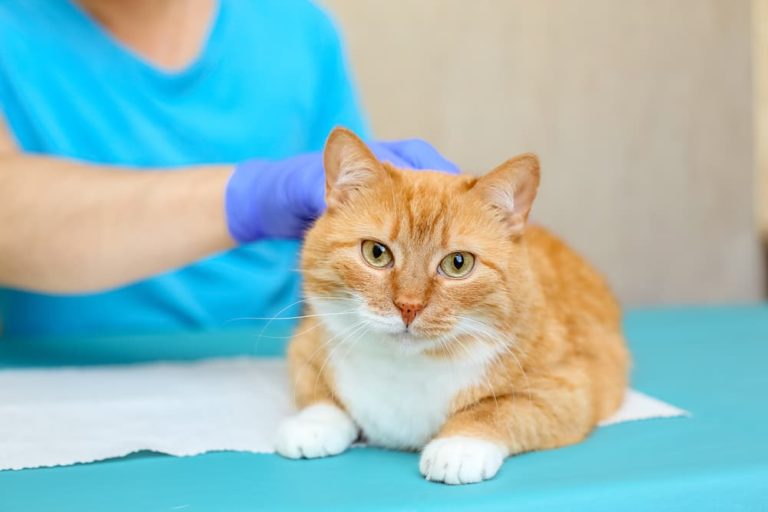
Overview
A cat’s liver works hard, performing such functions as producing proteins and vitamins, removing toxins, and metabolizing fats and carbohydrates. A cat can quickly become very ill when the liver becomes diseased by conditions like hepatic lipidosis.
Hepatic lipidosis in cats is one of the most common liver diseases and can be fatal if not treated immediately and aggressively. Fortunately, with early and effective treatment, cats can fully recover from hepatic lipidosis and not relapse.
What is Hepatic Lipidosis?
Hepatic lipidosis in cats is also known as fatty liver syndrome. It is a common feline liver disease caused by the liver being overwhelmed with body fat that is transported to the liver when a cat becomes anorexic.
Causes of Hepatic Lipidosis in Cats
Hepatic lipidosis in cats is usually caused by an underlying medical condition, including those listed below:
- Cancer
- Diabetes
- Pancreatitis
- Kidney disease
- Other liver diseases
- Nutritional deficiencies
- Inflammatory bowel disease
- Hyperthyroidism (overactive thyroid gland)
In addition to these medical conditions, several risk factors can make cats more prone to developing hepatic lipidosis. These risk factors include obesity, stress, and a sudden change in diet. Overweight or obese cats are especially susceptible to hepatic lipidosis because of how much extra body fat they have.
The common denominator for these causes and risk factors is anorexia. When a cat stops eating for several days, the body starts using its fat stores for energy because the cat is not getting fat from their diet. The fat moves to the liver to be processed into energy.
Unfortunately, this massive movement of fat to the liver clogs the liver’s cells. The liver cannot process the fat quickly enough and stops functioning well. In severe cases, the liver stops working, leading to liver failure.
Symptoms of Feline Hepatic Lipidosis

Hepatic lipidosis can make a cat seriously ill very quickly. Here are common signs of hepatic lipidosis in cats:
- Pallor
- Lethargy
- Vomiting
- Constipation
- Muscle wasting
- Clotting problems
- Excessive salivation
- Neck bent downward
- Avoiding the food bowl
- Dramatic, rapid weight loss
- Behavioral changes (social withdrawal, depression)
- Jaundice (yellowing of the eyes, skin, gums)
The presence of jaundice indicates severe disease. A cat with jaundice from hepatic lipidosis could die from the disease and needs immediate and aggressive treatment.
Diagnosing Fatty Liver Disease in Cats
Take your cat to your veterinarian as quickly as you can if your cat has symptoms of hepatic lipidosis.
Your veterinarian will first take a history and perform a physical examination. For the history, share as much detail as possible about your cat’s symptoms and dietary and medication history.
In addition to the history and physical examination, your veterinarian will use bloodwork, abdominal ultrasound, and tissue sampling to diagnose hepatic lipidosis.
The bloodwork will reveal abnormalities that indicate liver disease, such as elevated liver enzymes. The bloodwork may also indicate anemia and abnormal levels of electrolytes like potassium and sodium.
An abdominal ultrasound will show an enlarged liver. On the ultrasound, your veterinarian will also look at other abdominal organs, like the kidney and pancreas, for evidence of underlying disease in these organs.
Tissue sampling, by biopsy or ultrasound-guided fine needle aspirate (FNA), is the best way to definitively diagnose hepatic lipidosis. Performing an FNA involves inserting a long, thin needle into the liver and removing a small piece of tissue. A biopsy would require surgery and may not be possible, depending on a cat’s health status.
Treating Hepatic Lipidosis in Cats

Treatment for hepatic lipidosis in cats must start early to maximize the chance of a full recovery and can last 6 to 12 weeks. There are several treatment goals for this condition.
Through treatment, veterinarians try to:
- Correct dehydration
- Correct nutritional deficiencies
- Stop fat mobilization to the liver
- Restore normal electrolyte levels
Cats will need to be hospitalized for at least the early part of their treatment. Treatment includes nutritional support, medications, and intravenous fluid therapy. Nutritional support is complex and will be explained in the next section.
Medications are given to reduce symptoms, support liver function, and, if needed, manage the underlying disease that contributed to the hepatic lipidosis.
Depending on a cat’s nutritional deficiencies because of anorexia, injectable nutritional supplements may be given to correct those deficiencies.
Intravenous fluid therapy restores hydration and normal electrolyte levels. It is administered before beginning nutritional support. To prevent overhydration, obese and overweight cats with hepatic lipidosis should be given fluid therapy according to their ideal weight, not their current weight.
Nutritional Support for Cats with Hepatic Lipidosis
Nutritional support is provided to cats with hepatic lipidosis through long-term feeding tubes for several weeks or more. The tube is either an esophagostomy tube (placed directly into the esophagus) or a gastrostomy tube (placed directly into the stomach). For severe cases of hepatic lipidosis, cats may need to be fed intravenously before being fed through a feeding tube.
Affected cats are fed a high-protein, calorie-dense, balanced food. The goal is for cats to take in enough calories to stop fat mobilization. It is crucial to avoid forced feeding by mouth. Forced feeding can lead to food aversion syndrome, complicating and prolonging treatment.
Nutritional support through the feeding tube is gradually increased until a cat takes in their optimal daily caloric intake. Your cat will not stay in the hospital the entire time they are tube fed, so your veterinarian will instruct you on how to do the feedings at home and maintain the tube.
The tube can be removed after a cat can eat enough on their own, by mouth, to maintain their body weight.
The Cost to Treat a Cat for Fatty Liver Disease
The costs for treating fatty liver disease in cats can quickly add up, so be prepared. Here are the typical expenses for treating this condition:
- Medications
- Hospitalization
- Nutritional support
- Feeding tube placement
- Continued monitoring
- Intravenous fluid therapy
The total cost will vary, depending on disease severity and how long your cat needs to be hospitalized.
How to Prevent Hepatic Lipidosis
Hepatic lipidosis in cats is not entirely preventable, but you can reduce your cat’s likelihood of developing the disease. For example, monitor your cat’s weight and work with your veterinarian on a weight loss plan if your cat is overweight or obese.
Also, reduce your cat’s stress and stay on top of managing chronic diseases. Make changes to your cat’s diet gradually and take your cat for regular wellness visits.
